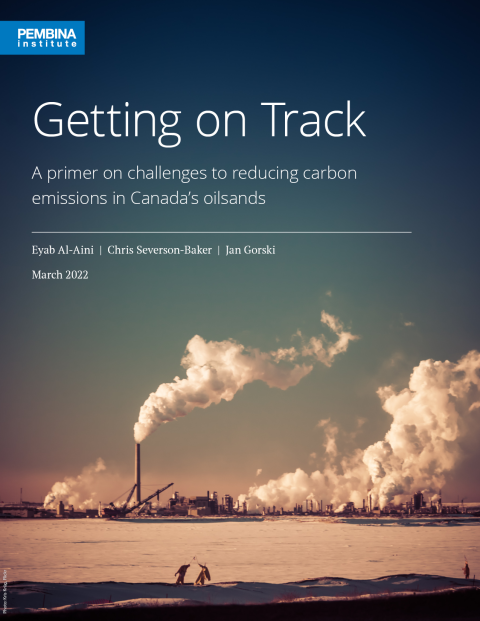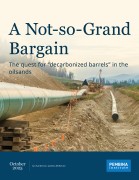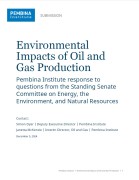Canada’s oilsands producers face an unprecedented challenge. In the short term, this carbon-intensive sector must significantly reduce its greenhouse gas (GHG) emissions. Over the long term, the sector must also confront the prospect of a decline in demand for its product. As a major employer, exporter and source of government revenue, the oilsand industry’s performance on national and global decarbonization goals has significant ramifications that extend far beyond Alberta to every corner of the country.
The oil and gas industry has been the fastest growing source of GHG emissions in Canada, accounting for 26% of total emissions in 2019, according to Environment and Climate Change Canada. Between 2005 and 2019, emissions from the oilsands soared by 137% as production increases outpaced reductions in per-barrel emissions intensity.
Responding to pressure from investors, stakeholders, and government, companies representing approximately 95% of Canada’s oilsands production announced their net-zero commitment in a joint initiative called the Oil Sands Pathways to Net Zero (June 2021).The plan proposes a combination of initiatives that include clean electrification, operational efficiencies, emerging technologies such as low-emission hydrogen and carbon capture, small modular nuclear, and offsets to eliminate 68 million tonnes CO2e from oilsands operations by 2050.
These decarbonization strategies, as well as the sector’s definition of net-zero, bear scrutiny. In our report, it is noted that the net-zero target does not include GHGs from off-site processing or from refined combusted fuels, which together can account for as much as 80% of life cycle emissions. And while the 2021 vision statement on an oilsands pathway to net-zero identifies significant opportunities for decarbonization, the means for achieving this goal rely on technologies that likely won’t be scalable and affordable until after 2030. As a result, the sector will be unable to achieve emissions reductions that are in alignment with Canada’s 2030 target of a 40% to 45% reduction below 2005 levels.
However, there is great potential within the sector to drive down emissions still further and make a greater contribution to Canada’s climate goal. Given the available technologies for lowering emissions that have already proven to be viable at a commercial scale, there is an argument that Canada’s oil and gas sector as a whole – with the oilsands as a substantial subsector – is better positioned than other parts of the Canadian economy to meet or exceed Canada’s 2030 emissions reduction targets.
In a post-2030 world where demand for oil will decline and competition between producers to deliver the lowest-cost and lowest-carbon barrel of oil will intensify, meeting the net-zero target will, without doubt, be challenging for Canada’s oilsands sector. This report informs the urgent and ongoing conversation on how to meet these challenges by the most effective means and in ways that mitigate risk, deploy existing technologies, and leverage market opportunities.













